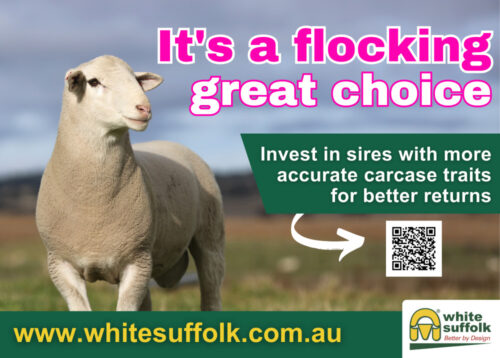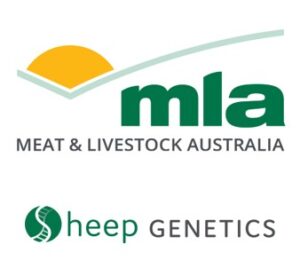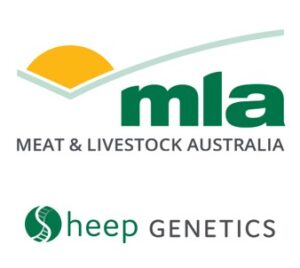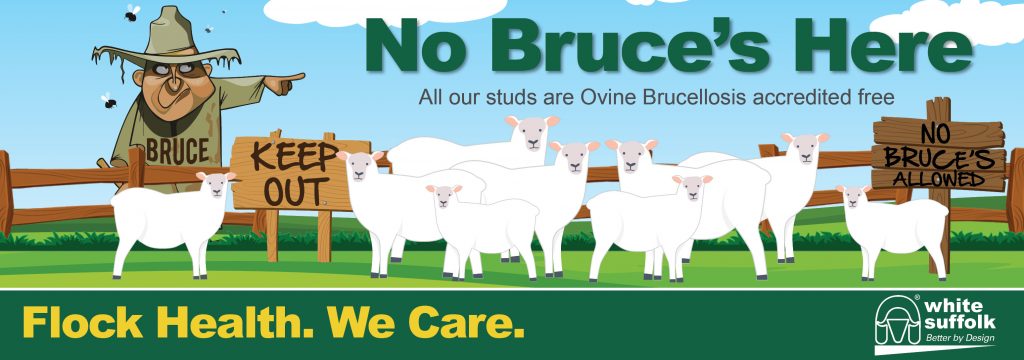Research & Development
We invest in accurate eating quality research to ensure producers can make better decisions on carcase traits and achieve more profitable returns

When it comes to lamb, the most important factor is what ends up on the plate.
That's why we have invested in projects that boost the accuracy of eating quality traits to help you make more accurate decisions on the sires you use.
Our projects aim at broadening the footprint, so that producers can use rams with confidence and make selection decisions that help achieve their objectives and goals.
Here's a snapshot of the gains we achieved in accuracies of eating quality and carcase traits for the sires selected in our first Satellite Flock project:
- Intramuscular Fat accuracy increased by a massive 18.6 per cent on average.
- Shear Force accuracy increased by 16.1pc on average.
- Total Carcase Production (TCP) saw an increase in accuracy of 7.1pc on average.
- Lamb Eating Quality (LEQ) increased by 14.9pc on average.
The 16 sires selected had been used in 158 White Suffolk flocks and had produced 7555 lambs in Lambplan at the time the project concluded. That doesn't include non-Lambplan progeny and relatives.
Read more on our involvement in our Satellite Flock projects for eating quality and carcase traits below.
Project 2:
MLA Resource Flock: Satellite Flocks for eating quality and carcase traits (current)
Project start: October 2022
Expected Project completion: February 2024
Project funded by Meat & Livestock Australia and the Australian White Suffolk Association
and kindly supported by Shearwell Australia
Project Aim:
To join 13 White Suffolk sires to 325 Merino ewes, measure traits in the live lambs, slaughter the lambs with measurements completed by the MEQ probe for Intra Muscular Fat in addition to assessment for all eating quality and carcase traits. This information will be submitted to Sheep Genetics and contribute to the information used in the calculation of ASBs for each sire. This will increase the accuracy of Genomic tests done by any breeder on animals related to these sires for hard to measure eating quality traits.

Selected Sires:
The sires selected for this project will provide the greatest diversity of bloodlines, have been used in the most number of White Suffolk flocks possible, and with the least relationship to the MLA Resource Flock. Thee following sires have been selected for the second round project:
Detpa Grove 200477 (link sire)
Langley Heights 190090 (link sire)
Ashmore 210064
Days 190108
Farrer 190001
Gemini 170470
Ida Vale 194051
Langley Heights 180231
Rangeview 190098
Smithston 200882
Valma 202189
Wakeleigh 200186
Wattle Park 180280
Project 1:
MLA Resource Flock: Satellite Flocks for eating quality and carcase traits (completed)
Project start: November 2020
Project completion: March 2022
Project funded by Meat & Livestock Australia and the Australian White Suffolk Association
and kindly supported by Shearwell Australia
Project Aim:
To join 15 White Suffolk sires to 300 Merino ewes, measure traits in the live lambs, slaughter the lambs and do full measurements of eating quality and carcase traits on every carcase. This information then goes into Sheep Genetics and gives accurate ASBVs for carcase and eating quality traits.


Project Purpose:
The purpose of the project is to test progeny of sires within the White Suffolk breed that are not well linked to the current MLA Resource Flock. This will broaden the footprint of White Suffolk sheep that have actually had carcase and eating quality testing done on lambs. It means that Genomics tests subsequently completed by White Suffolk studs that have sheep that are related to the sires in the project will be much more accurate and useful. This will therefore allow better selection decisions and faster genetic gain in eating quality and carcase traits for all White Suffolk breeders.
The sires selected for this project will provide the greatest diversity of bloodlines, have been used in the most number of White Suffolk flocks possible, and with the least relationship to the MLA Resource Flock.
Selected Sires:
A total of 62 sires were nominated for consideration in the project. The selection criteria for sires included: 20 doses of semen currently available; The sire has been used in more than one flock; and The sire or its sire has not been used or its nomination accepted in the MLA Resource Flock.
A relationship program run by AGBU was utilised to rank the nominated sires with the least relationship to the MLA Resource flock. This list was further reviewed to ascertain whether semen was available and the number of flocks each sire had been used in.
As a result, the following sires have been selected for the project:
Anden 150277
Aylesbury Farm 177408
Baringa 16W300
Booloola 170093
Bundara Downs 179821
Fairburn 180567
Gemini 170171
Koonawarra 140259
Kurralea 160231
Langley Heights 160054
Mertex 170575
Warburn 140512
Wheetelande 148159
Yonga Downs 170386
Somerset 160067 (link sire)
Project Objectives and Conclusions:
| Objective 1: Increase the number of White Suffolk sires presented in the Resource and Satellite Flocks. This will broaden the footprint of lambs born across the breed that are closely related to animals that have been measured for eating quality traits.The result: The project selected 14 sires (and a link sire) that were widely used in the White Suffolk breed, not in the Resource Flock, and had the least relationship to sires already in the Resource Flock. They have bow been used in a minimum combined total of 158 flocks with at least 7555 progeny (these figures are flocks and progeny recorded in Lambplan and do not include the non Lambplan flocks and progeny). These figures also so not include the sires own siblings, their progeny and any other related animals. |
| Objective 2: Join the selected sires to an even line of commercial ewes. Measure and record these lambs for sire, sex, birth type, weights, fat and muscle depth. Slaughter all lambs and measure the carcases for carcase and eating quality traits. Enter lambs and data into the Sheep Genetics database. The result: The project successfully completed an AI program, measured and recorded all lambs for all desired traits both live and carcase, and entered into Lambplan. |
| Objective 3: Increase the accuracy of carcase and eating quality traits of these sires and therefore all lambs that are related to them. The results: The accuracy of carcase and eating quality traits has been significantly increased for the selected sires and therefore their progeny. The results recorded a large increase in accuracy on average for theses sires of 18.6% for IMF and 16.1% for SF5. |
Project Timeline:
| November 2020 | Final Sire Selection completed | Completed |
| January 2021 | AI ewes to selected sires | Completed |
| March 2021 | Pregnancy scan ewes | Completed |
| June 2021 | Lambing | Completed |
| July 2021 | Mark lambs and DNA test | Completed |
| August 2021 | Wean and weigh lambs | Completed |
| October 2021 | Weigh and scan lambs | Completed |
| November 2021 | Weigh lambs and send to processor | Completed |
| November 2021 | Carcase and meat measurements and processing | Completed |
| December 2021 | Data submission to Sheep Genetics | Completed |
| February 2022 | Data analysis and final reporting | Completed |
More information:
Project Manager - Debbie Milne, mob: 0407 724 066
Secretary - Nikki Ward, mob: 0488 018 765
Or view more information from Sheep Genetics here.


